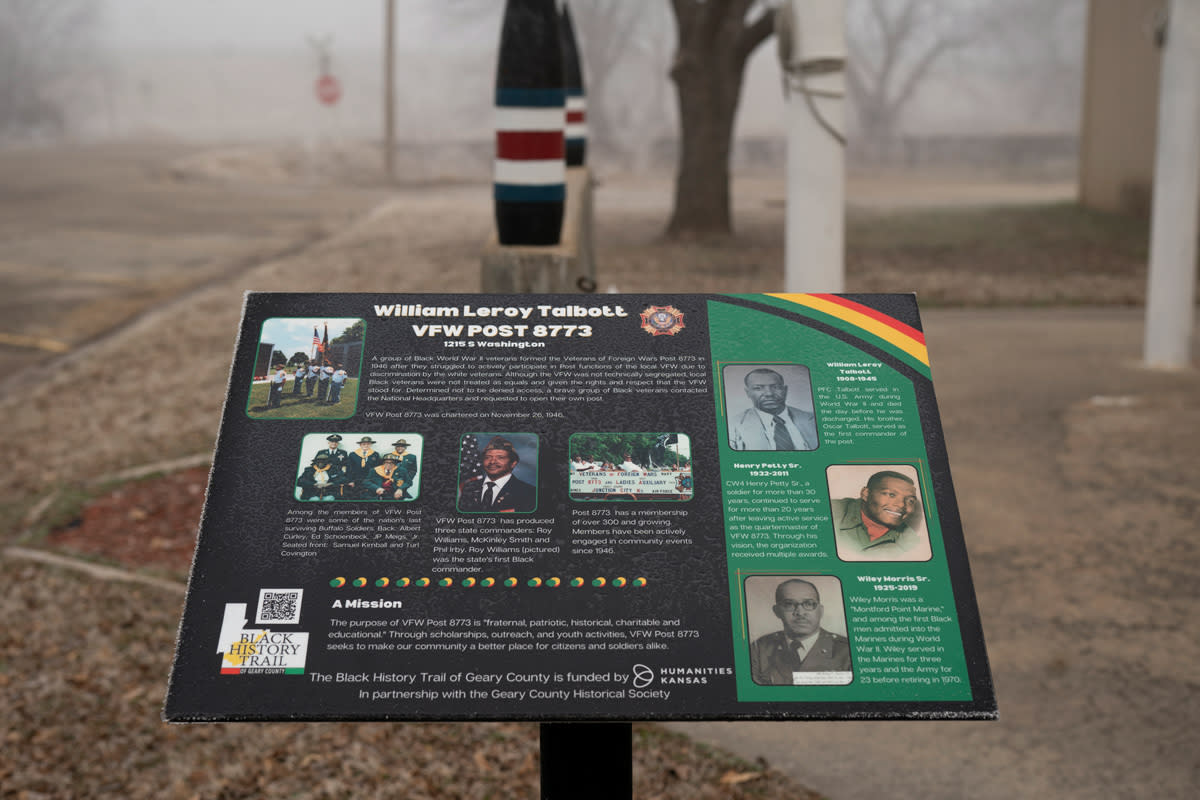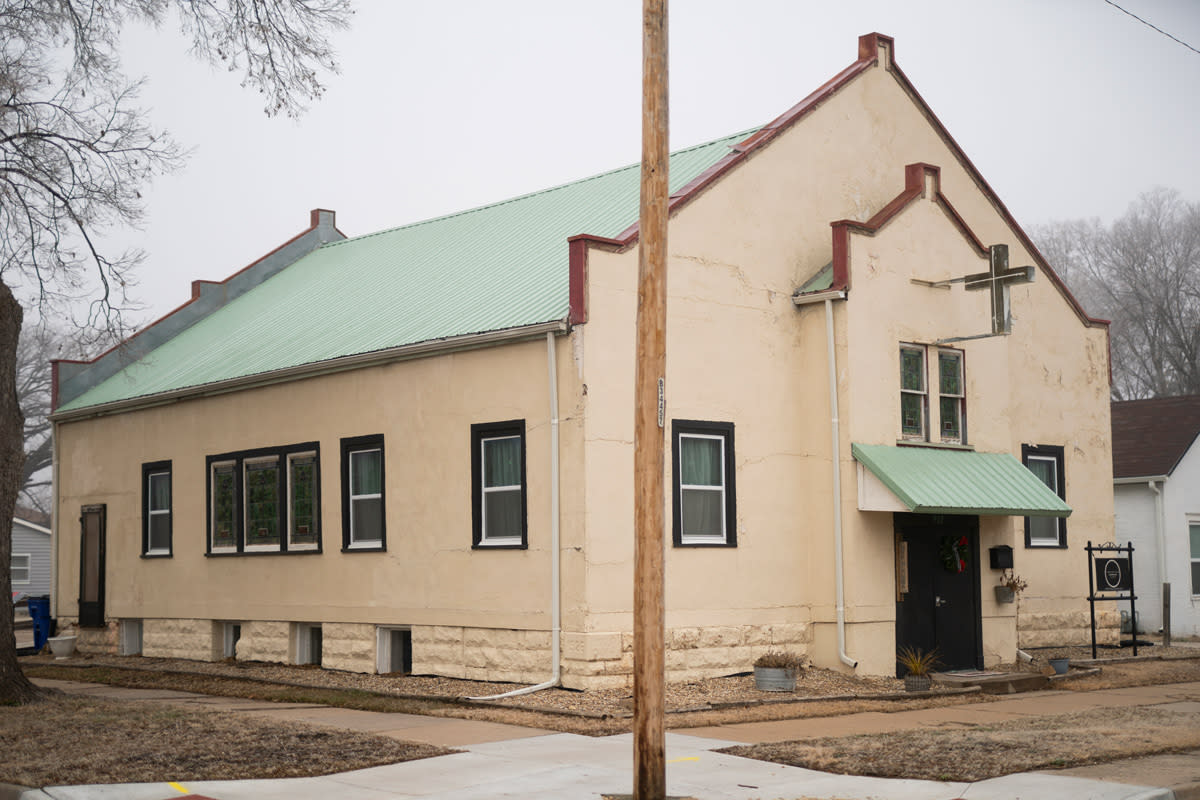 Jim Sands, President of the Black History Trail of Geary County / Photography by Nick Krug
Jim Sands, President of the Black History Trail of Geary County / Photography by Nick Krug
A county project to commemorate almost a dozen locations opens interconnected stories across the region
In the late 1990s and early 2000s, while serving as the garrison sergeant major at Fort Riley, Jim Sands began to meet with some of the oldest surviving Buffalo Soldiers, the term used for Black soldiers who served in all-Black units during the segregated years up to 1944.
 Site 1 - William Leroy Talbott VFW Post # 8773
Site 1 - William Leroy Talbott VFW Post # 8773
They told Sands stories about serving a nation that did not officially recognize them as full citizens, they talked about their pride in their service and their hopes for the future. Several years later, while at a statehouse ceremony to honor them, the last veterans turned to Sands and asked him to be responsible for preserving their legacy.
“Well, I looked at them and all around them because their families were there, and I said, ‘That’s a large charge!’” Sands recalls.
Retired and now living in Junction City, Sands has made preserving the Buffalo soldiers’ stories his work, as well as preserving the legacy of the broader Black community in Junction City and Geary County. Partnering with an array of community volunteers and organizations, Sands has helped start the Black History Trail of Geary County, a series of signs and markers identifying and exploring accomplishments, tribulations, and often nearly-lost legacies.
The group erected their first marker in honor of Black World War II veterans who chartered Veterans of Foreign Wars Post 8773 after being denied access to their local post’s functions. Other informational signs are posted at Rathert Field, the Church of God, Ward Chapel, and Second Missionary Baptist Church, with at least seven more locations set to be marked. The project’s goal is to facilitate greater understanding of the role of African Americans in Kansas history.
“As we do more research, we keep finding more locations, such as a high school that stood around 1867,” Sands explains. “It was integrated and had 151 white students and 15 kids of Color who went to school together.”
Sands says discoveries in one location lead to new knowledge of historical events, groups, or individuals in other parts of the state.
“We were looking at how the Civilian Conservation Corps set up some of the limestone posts in this county and came across the name of this Black gentleman, Folgham, who came up with the technique of planting and anchoring the limestone posts into the soil. His method was used across Kansas, and I think he was from Dunlap, an Exoduster town near Council Grove. So there is a lot in Geary County, but if the counties are connected in their research, then we can do a lot more,” Sands explains.

Turning back to Geary County and Junction City, Sands says one of his most elusive goals is to locate and preserve photographs of East Ninth Street from the 1940s to the 1960s. At that time, it was a jazz club area and then a Black entertainment and residential district. Even though the region was made famous through a film by Oscar-winning filmmaker Kevin Willmott, there is no photograph of the area made public.
“We’re doing our best to find pictures,” Sands says. “We know they are out there.”
And when they are found, they will join a growing collection of information and images that form the Black History Trail of Geary County.




